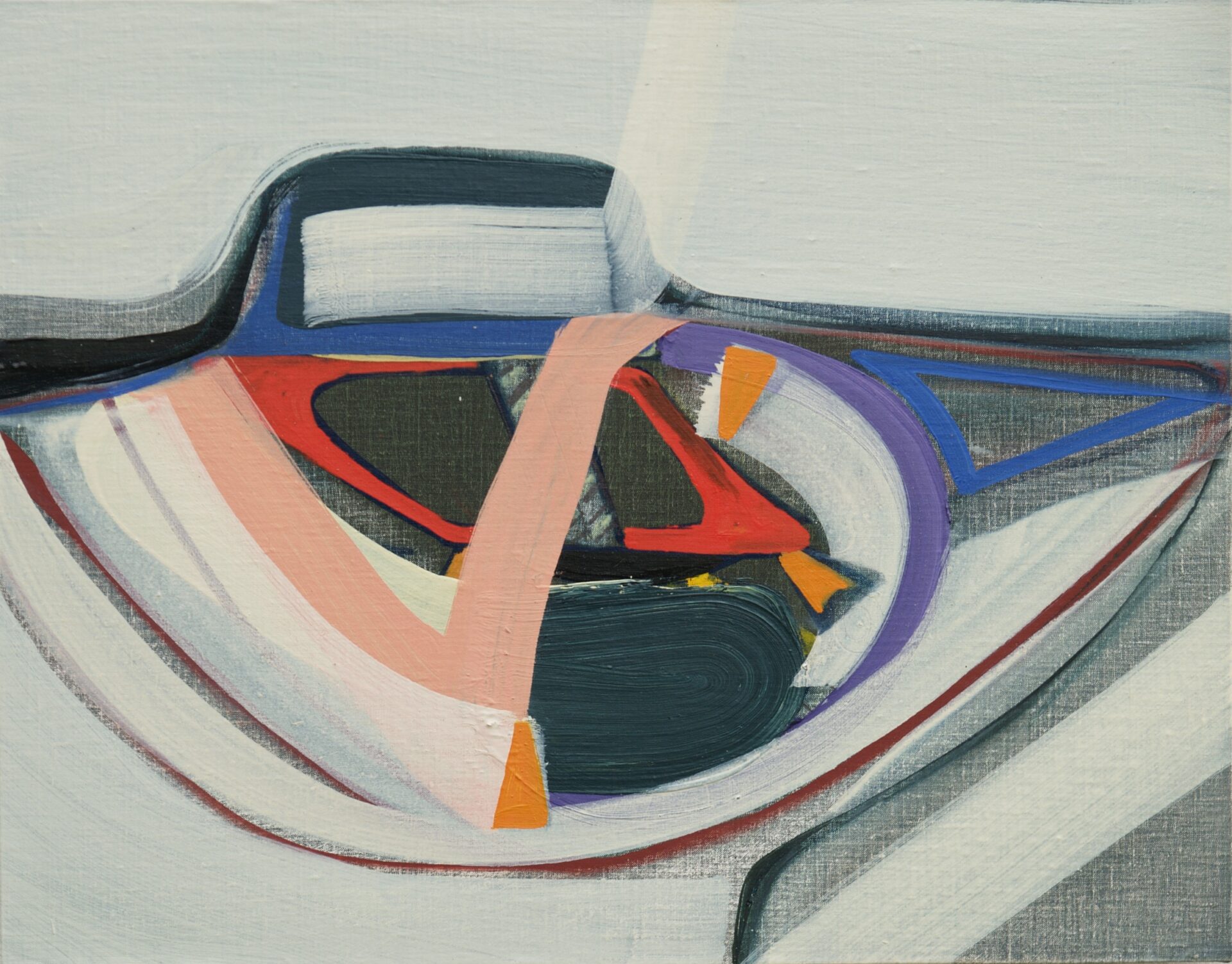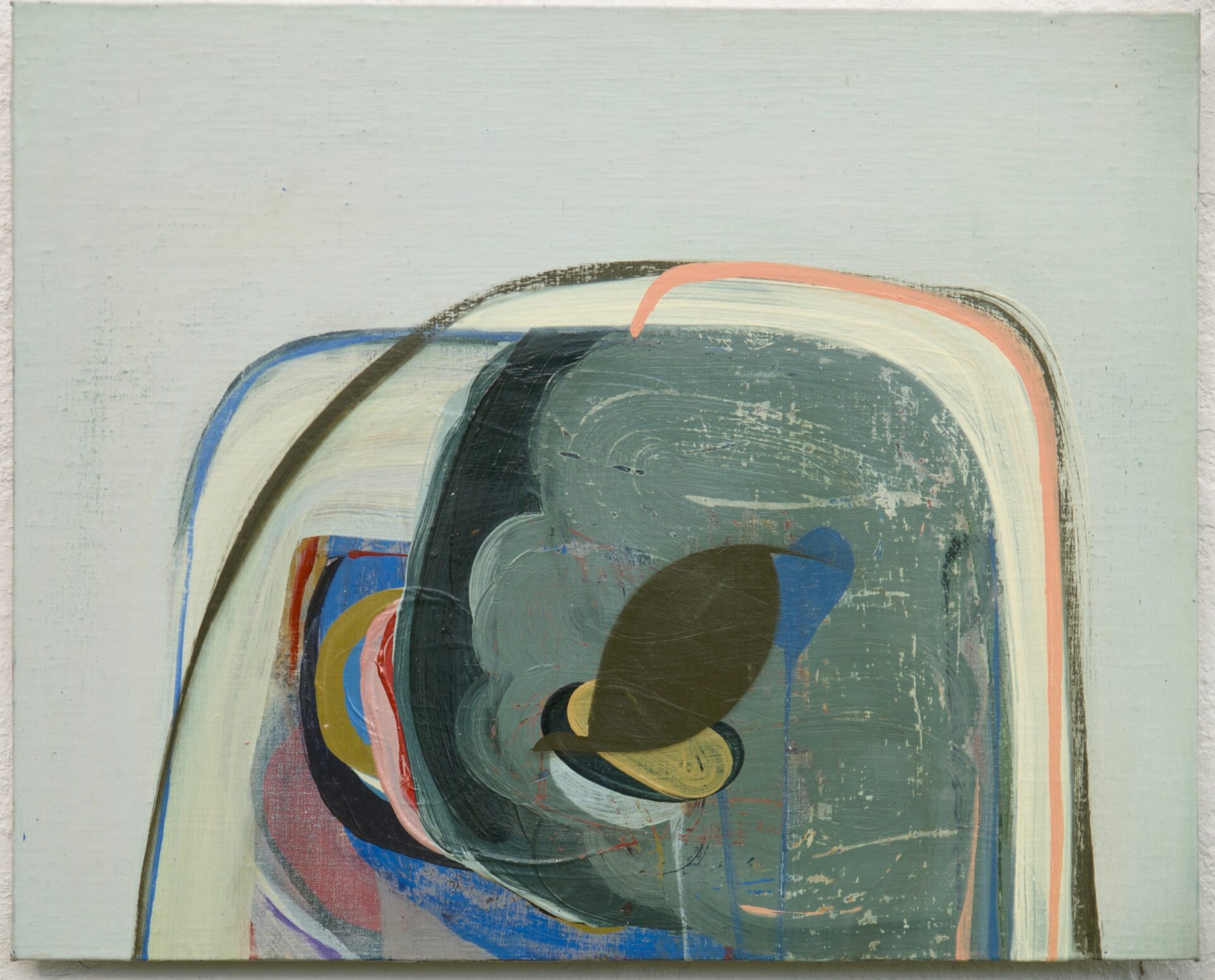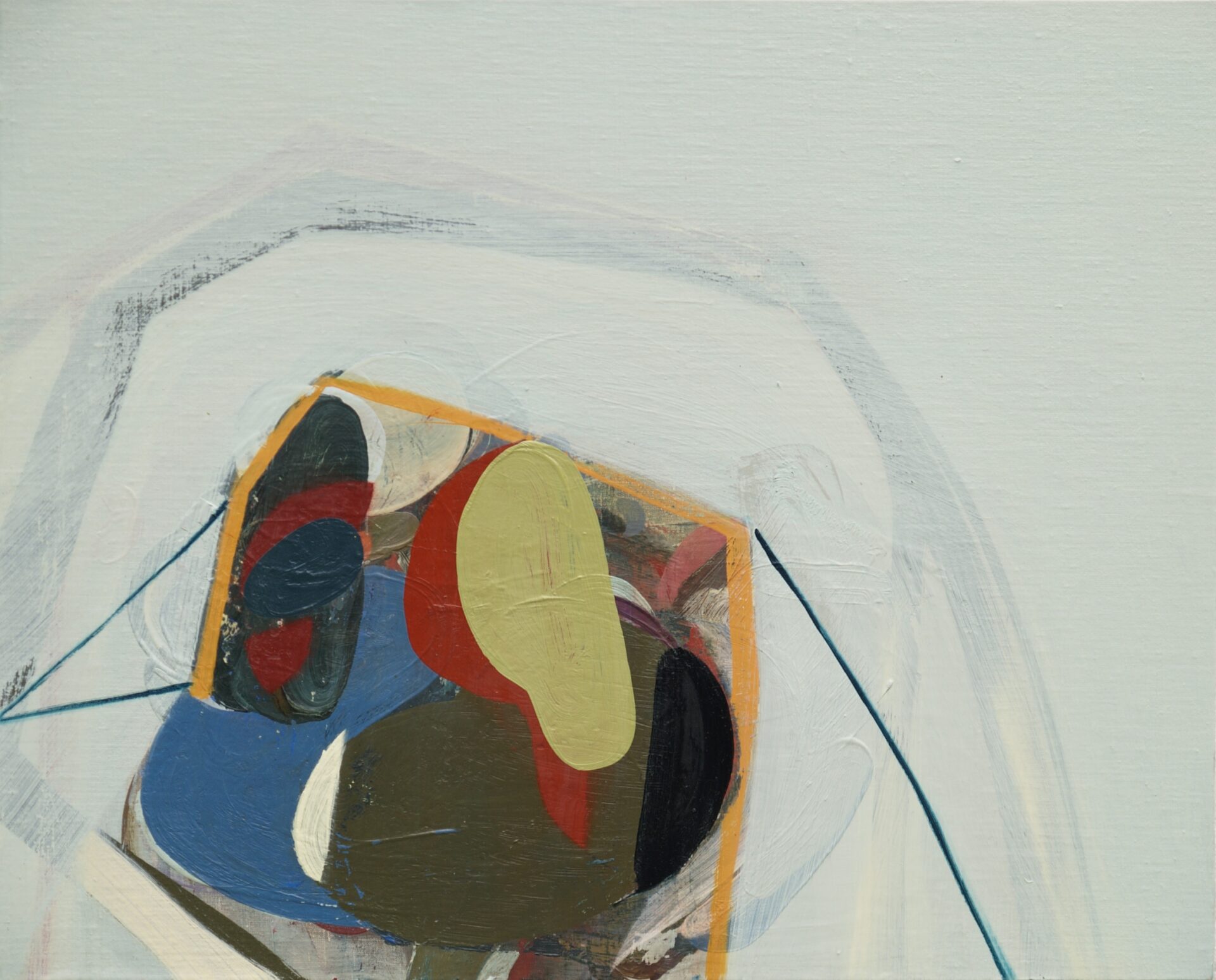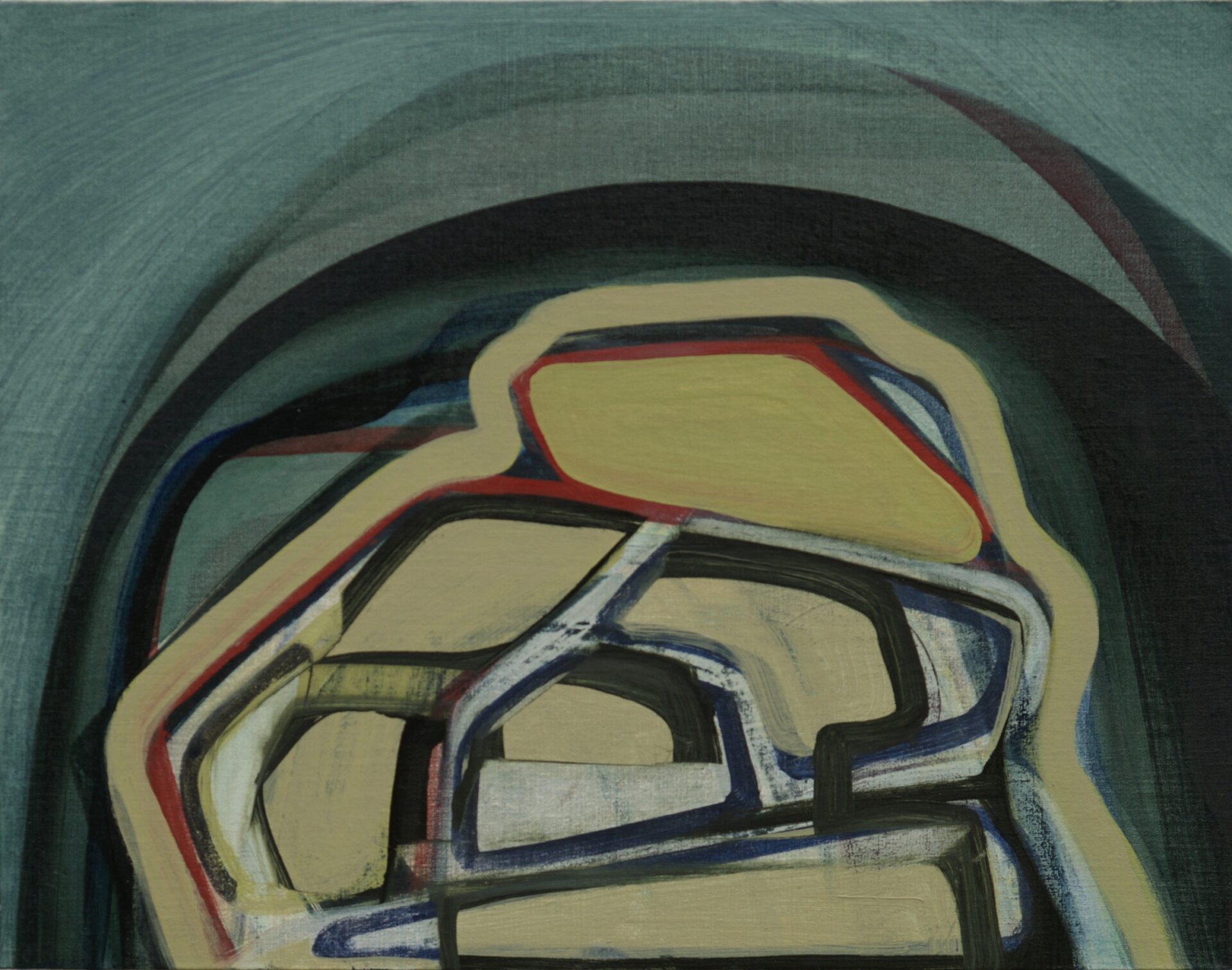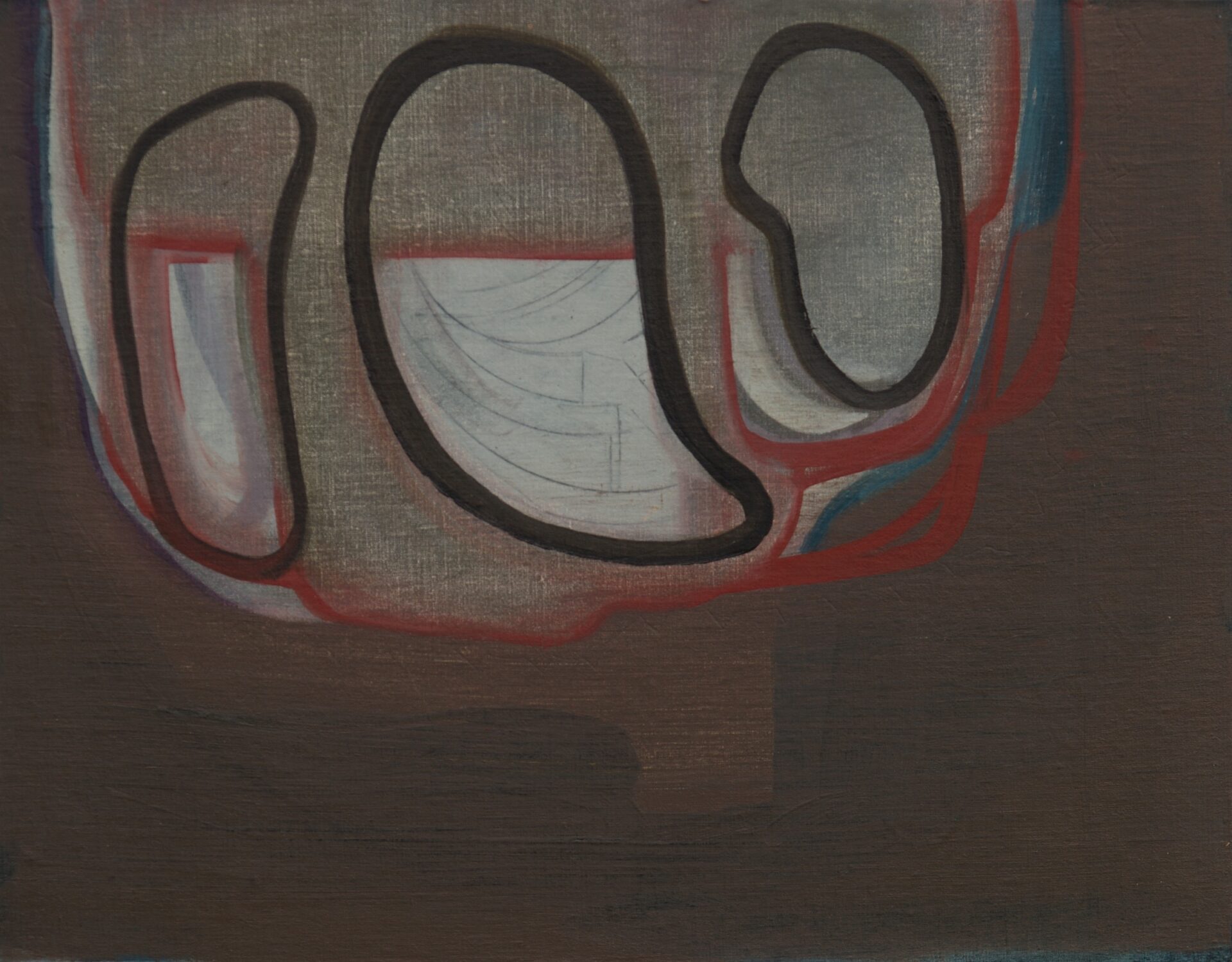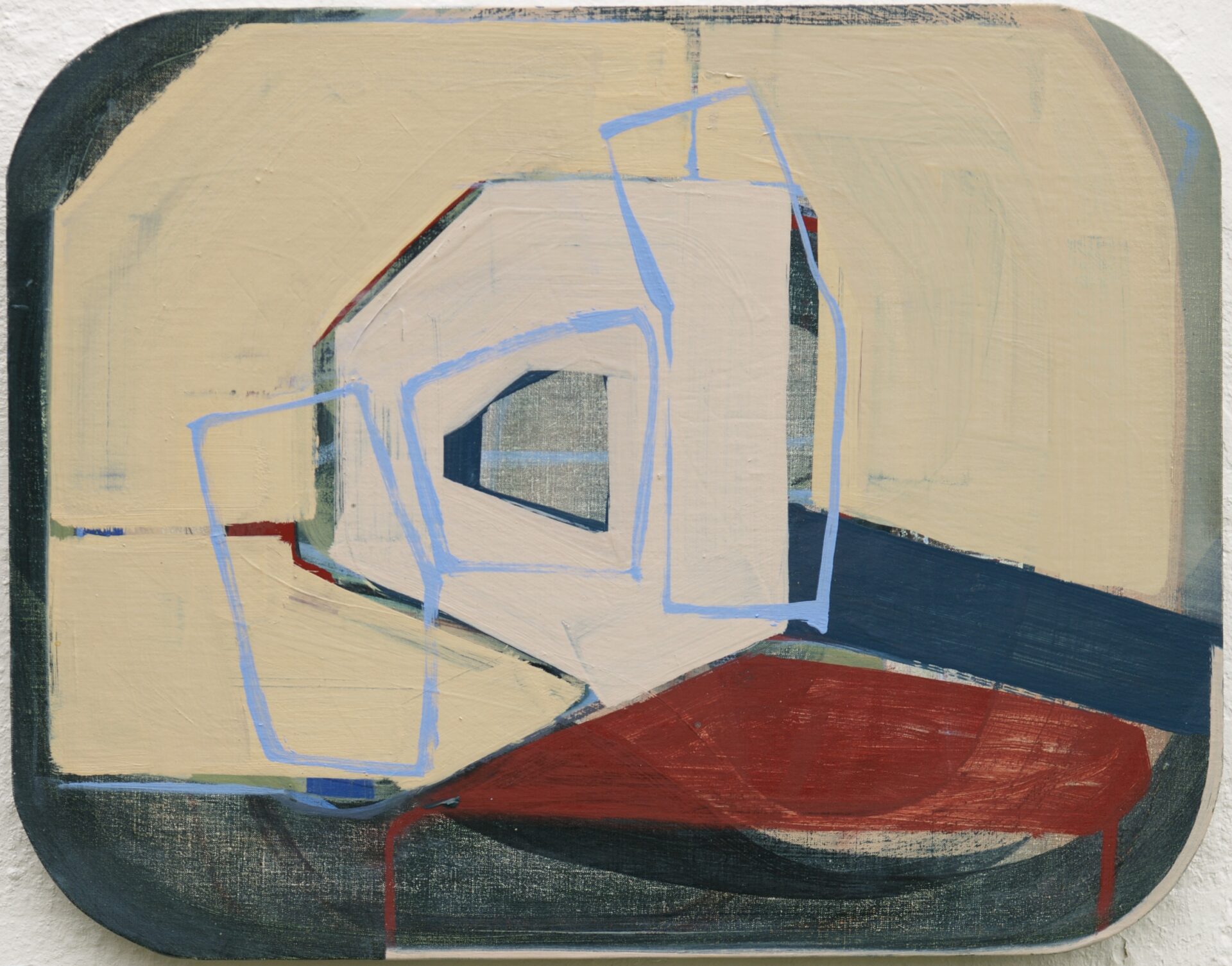Sinead Aldridge emailed me the following quote shortly after I reviewed her exhibition at the Dock in Carrick – on- Shannon in 2006.i
“It seems that Nozkowski – at one level – is constantly biting at the
boundaries of abstractions, and certainly painting’s history. Rather than taking painting to its physical limits as a Fabian Maccacio or Jessica Stockholder might do, Nozkowski is closer in spirit to Jonathan Lasker and Raoul de Keyser in his interrogation of painting’s limits from within. Irrespective of his sources or even intentions, each encounter is a new beginning, a new experience and not just an unsubtle philosophical argument.”
The key idea is “interrogation of paintings from within” – Aldridge does that in her commitment to restore painting’s prestige.
Both Nozkowski and Aldridge use a small ‘domestic’ format and paint biomorphic shapes and hard-edge shapes with energy and vigour. Both rely on observations and intuition. Both allow their images to be simultaneously evoking and obscuring.
Aldridge’s images do not look like those of Thomas Nozkowski. His grounds are often “shredded” by short lines or variegated by some other marks. Aldridge favours a calm ground, the paint rolled over to avoid brushmarks. Her grounds are infinite spaces, infinite cosmos, a device familiar from medieval paintings. After all she thought of “Giotto’s Blue”, reference to which I found in an early essay by Catherine Marshall,ii who perceived Aldridge as a figurative painter, citing Aldridge for support: “…for me, what makes a figure is that it is contained, that it has internal pressure.” The infinite ground and a contained figure relate to both abstract and representational painting and also to Gestalt, a well known theory of perception. It presupposes that the operational principle of our brain is holistic, parallel and analogue with self-regulating tendencies. Gestalt refers to the fact that the eye recognizes whole forms and figures instead of marks and areas. Gestalt and Aldridge’s paintings are concerned with key principles that work not as separate entities but as a dynamic whole, namely:1/ the emergence of an object/figure from component parts, e.g. meandering loop defines a head in HemakesMistakes;2/ the reification of illusory contour or marks, e.g. blue lines stretch the canvas of a tent in Camp ;3/multistability (so well used by C Escher), e.g. Microcosm; and 4/ invariance, which allows recognition of simple object independent of scale, translation, deformation or lighting, e.g. the lips in grey-blue area of Score.
The extraordinary, baffling figures do nothing less than address our normal way of looking and thinking about the world. Gestalt does not explain anything, it only describes, if incompletely, how our perception works.
Observing other art.
Aldridge certainly looks at art of others and makes serious, considered selections, e.g. she incorporates abstraction that was born out of belief in two worlds, which, in secular realm, could act as a sign for divided society.
I have seen one of her sketchbooks filled with drawings made in front of paintings in Madrid’s Prado. The drawings capture compositions, poses of figures, and, significantly, the important curves that “contain” a figure. Her pencil makes strong, bold, sharp strokes as if a chisel sculpted an invisible block of marble out of the empty page. A scribbled note next to a Rogier van der Weyden’s DepositionfromtheCross states:” …exceptional shallow space” whereas “grey-yellow, cobalt, green” refers to a Madonna Enthroned (1430-35). The Flemish model is subliminally subsidiary of the green-yellow figure of the Motherbase. A thin red outline keeps meandering from beneath the dominant hues, as a half forgotten memory of Rogier van der Weyden’s Madonna in red (1440). The ground is formed by tessellating segments of arches in different tones of grey, reminiscent of the head veil that appears in Flemish 15th C Madonnas and portraits. The position of hands is mapped into tubular off-white shapes accentuated by black that induces the illusion of three- dimensionality. I am not suggesting that Aldridge consciously planned a re-working of the fragments of the observed art, I am suggesting – encouraged by the drawing in her sketchbook and the title of her painting that her sensitivity to other art enhances her intuitive grasp of painterly possibilities, the above mentioned interrogation from within.
The artist’s statement.
Aidan Dunneiii has noted in 1999 that “the titles … are littered with references to landscape and other subject matter… edited down by incursion of opaque expanses of flat, neutral colours”. He noted also a focus on spatial relationships “simultaneously suggesting and thwarting painting’s seductive, illusionistic potential, of both opening up vistas and dragging us back to here and now of the surface.” That exhibition, TheLight Sleep ofS pace, was displayed in the Sligo Art Galleryiv and became an opportunity for the artist to make a statement about her art practice:
“I think I should speak first about how I came to my present way of painting. Over the last number of years I have been working with collage and taking sections from or editing existing canvases. By placing these sections within a silent field one is made aware of the weight and matter of painting. This has changed the way I work on new paintings. For me a painting has to be made of risks taken. The space where I am interested in being is what Heiner Mueller called ‘the vicinity of mistakes’. The marks or events in the painting are lain down as a series of jolts which conspire together to form the space of the painting.
And if there is one theme of this painting it is my concern with space – or perhaps the relation between the space of painting and the space of the world. I am not interested in producing landscape in the traditional sense of that word with its associations of pastoralism and romanticism. I am, however, very interested in the relationship between interior and exterior spaces, between a rural sense of space and an urban one. The way such painters as Sassetta or Mantegna will nest an interior space within an exterior one fascinates me. They succeed in creating two types of intellectual as well as visual spaces.
I will try to explain some of the distinct types of space you will find in the paintings in this exhibition. There are open spaces that invite the viewer into the space. One type might be referred to as a ‘landscape’ and works by an absence of figuration. The other type of open space is made by slewing a figurative event to one side – not telling its whole story- and inviting the viewer to stand beside it. Other spaces are closed in the sense that they are sufficient to themselves, in these the event is singular and occupies all the spaces it creates.
A new feature of the work in the exhibition is the presentation of paintings as diptychs – juxtaposing a large piece with a smaller beside it. The larger piece will comprise a single mark or action – a single figure if you like. The smaller canvas will build a different, more open space. This method occurred intuitively, but when I think of it now it reminds me of the open window behind the Madonna’s head that opens out onto a pastoral – a structure occurring in so many European religious paintings. I hope for the viewer this diptych form is ripe with many possible pleasures of the eye.”
The salient points are: the open and closed space, intuition, and placement of a form into a silent field. In his review of that exhibition Cian Donnellyv, a painter, singled out Alp1 and The Landscape with Argonautes as harvesting the power of passion with perfect control of the internal order, within the realms of space, colour and gesture, noting when “colour and touch align the work becomes a poetic dialogue on the nature of identity”.
However, identity is not just a private matter, it emerges when the artist is true to herself and when the viewer feels called upon to respond.
On colour.
In my review of Penumbra I illustrated how a hue of the same tone changes its capacity for determining space, if put into different constellations of colours. A blue shape creates an illusion of hovering infront of the picture plane strongly suggesting the depth while blocking it (e.g. TearJerker). The blue hue recedes so far behind an off-white as to define the end of the painted space (e.g. Pupa). Moreover, in one and the same image the blue moves to the front of the queue of colours on the left, whereas on right it dives into the infinite depth behind the white (e.g.Glücklich). The capacity of a tone to define space is of course the bread and butter issue for all paintings, nevertheless, abstraction contributed to it a specific discipline mapped in 1911 by W. Kandinsky.vi Aldridge thought of the Penumbrapaintings as “containers for intimate thinking” an idea that elaborates Kandinsky’s idea of the difference between a fleeting sensation and the strong intensive experience that forges meaning and resonance, namely “ it is only as a step towards this spiritual vibration that the physical impression is of importance.”vii Aldridge submits colours to the space she aims at, open or closed. The Penumbra exhibition presented still another type of space: a container, closed and open simultaneously. Such an ambiguity increases the dynamics of the image but deletes all certainty about the meaning. Therefore the artist’s intention and my response are invited to make numerous detours around each other, transforming the perception of a painting over and over. This, after all, is the case with all poetry or music. Even with the traditional Western painting, which constructed directional spaces as an illusion of a story behind the picture plane. In a Modernist Abstract painting the colour may create an illusion/sensation of continuing into my space or pulling me to enter its space. Aldridge does still something else. Her 1999 abstract landscapes remind me of Nicolas de Stael (1914-1955). He used block like slabs of bold and vivid colours dividing the canvas into “zones” when his model was a landscape. I find the same relationships in Aldridge’s ‘landscapes’.
Here and Now.
Her latest work charges the colour in various forms and gestures with energy that evokes questioning through the layers of possibilities that all turn into uncertainties. The images are simultaneously forthcoming and hiding; blocky shapes and see-through layers work similarly to the layers of paint, layers of time as seen in paintings by H Hodgkin (1932). Quick handed airy gestures on paper(e.g. Indian ink and pencil) are never so drained of spontaneity as to lose an acute concern with both the chaos of life and the order of painting. The quality of these images reminds me of Bruce McLean’s (1944) works on paper, in the early 1980s. Looking at the ScoreI am reminded of Victor Pasmore’s (1908-1998)Harmonyofopposingforces, 1979 -1980. Different in shapes and application of colour, they are similar in composition and intensity of communication inside the painting. The above comparisons indicate that Aldridge’s abstraction consciously belongs to the European, not American abstraction. Why do I give myself this minatory luxury of art historical footnotes? It is for the delight that the quality of her images is on a par with those who are better known. At its most direct, it is a response to her invitation to think in the presence of her images, even if they are not just “thinking pieces”, in the sense a Hogarth is “a conversation piece”.
There is an unusual harmony between the hues and tones and marks or shapes; she locks all of them in, as if they united their powers to create a fragment of word that does and does not, simultaneously, exist outside the image. In its being a part of the ‘outside’ the image has connections to the artist, her experiences and imagination. A part, which it is not ‘outside’, forges identity that cannot be replicated. Such a duality warrants a dynamics of ambiguities beyond insecure definition or hidden correspondence with what is familiar. The “figures” on the infinite grounds are at times packed together by saturated brush, at other times they erupt like a cooling down mass of hot colour from an unknown source outside the frame. Smooth and rugged, calm and noisy, intoxicated with their neighbours or proudly standing solo apart from them, the colours and shapes forge a harmony of ordinary life, , even though they confidently claim a stake in High Art aesthetics.
Catherine Marshallviii described the process in 1999: Aldridge begins by making a figurative mark on a field of colour, this is often paired down, eroded, dissected into fragments until all that remains is its essence. Clarified and distilled.” I have not observed the artist working. I listened though to her telling me about it: she used verbs like overlay, scrape, dissect, split, scratch, cut back, built up, spill, fragment and only two nouns: layers and forms.
While looking at her paintings in this exhibition, I noted a phenomenon, which I call “knots” (like in R D Laing’s poetry): the knots emerge from the many colours, each brushed into one shape: an arch, segment, fragment, oval, semicircles, drops shapes, tear shapes, swirls, rectangles, triangles and shapes with no names. My enumeration may suggest a dominant role of geometrical abstraction. It would miss the target miserably. Hers is decidedly a bio-morphic abstraction that relates to geometry by subsuming it as a hidden order, or by giving it a specific role, e.g. in Keeper it succeeds in creating a strange eye that is watching the world; in Niche the eye is imprisoned or protected as something very precious behind the black bars; in Voyager the black hesitantly ascribe one form and weighs down another, while the pink suggests an arm. In SideCar the whole object is knotted to fly in the air. The Embankment does not look like one; it is a kind of mass growing from the lower frame, quietly appearing as do the hills when you drive down the Croce Domini in Dolomites. This is not a flippant private remark, rather an observation that the nature is never far away from Aldridge’s sources. An Arabic arch in the Frontrow betrays her looking at architecture.
Thinking about her art practice so far, I am reminded of an idea advanced by Paul Klee: he saw an artist as a tree trunk, its roots in the world, the crown being the work of art. Aldridge chose abstraction for that crown. Perfecting it over several decades she reached a control of colours without dependence on a narrative or on optical similarity. Instead, she allows an attentive eye to “read” the “history” of each image directly in it.
Dr Slavka Sverakova
July, 2008
i Penumbra, February 10 – March 11, 2006, viz www.recirca.com/reviews/2006/texts/rh.shtml
ii Painting is a singular act, 1992
iii Must See.Visual, The Irish Times, April 28, 1999
iv The Light Sleep of Space, April 15 – May 1, 1999
v Viz: Sinead Aldridge, The Light Sleep of Space, Arts West, 1999, p.49
vi Concerning the Spiritual in Art, chapter The Effect of Colour, inH.B.Chipp, Theories of Modern Art,
vii Ibidem, 153
viii as in note 2
